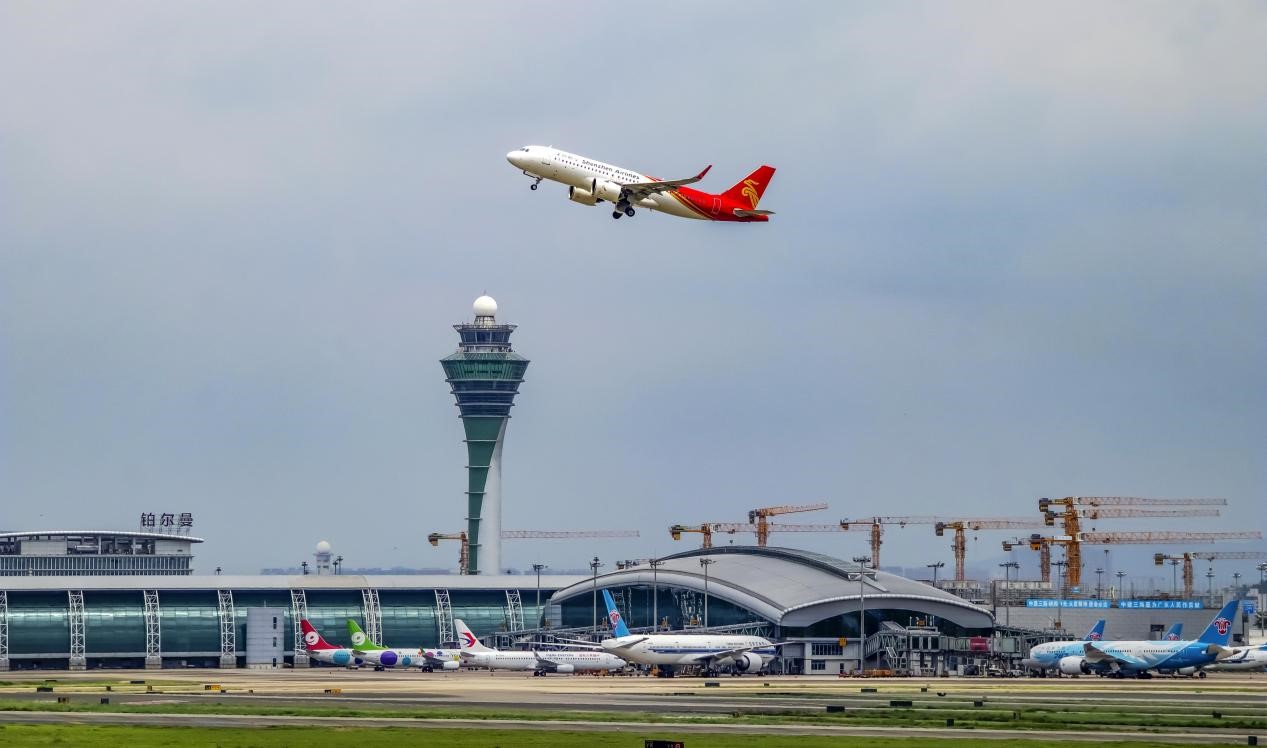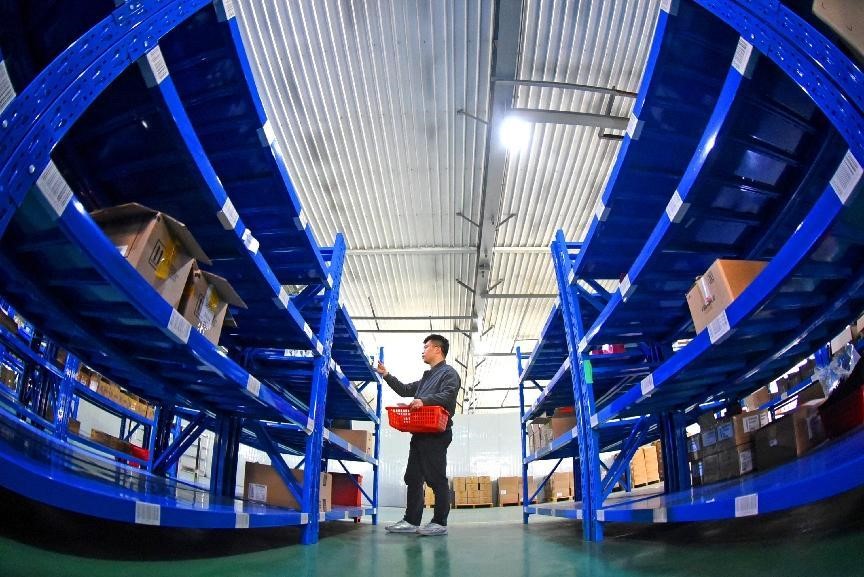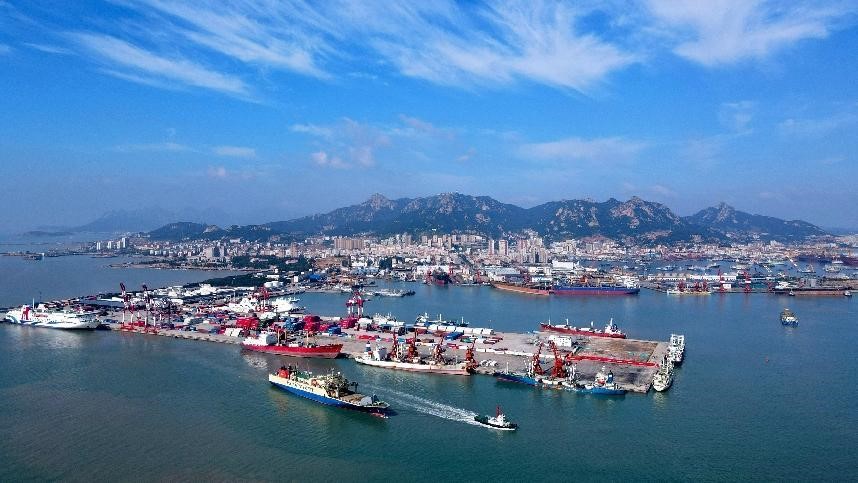Silk Road e-commerce promotes trade among Belt and Road countries
As part of China's efforts to share market opportunities, Silk Road e-commerce has experienced rapid development over the recent years, vigorously driving the two-way trade between China and other Belt and Road countries.

Chinese and foreign hosts sell products to foreign consumers on a livestreaming show in Zhengzhou, central China's Henan province, Aug. 8, 2022. (People's Daily Online/Zhang Tao)
It is constantly deepening international cooperation and expanding the Belt and Road "circle of friends."
At an export cargo station of the Guangzhou Baiyun International Airport, south China's Guangdong province, a batch of "made in China" commodities for cross-border e-commerce, including home appliances, clothes and toys, would soon be shipped to Pakistan, South Africa and other Belt and Road countries.
In the Qingpu Comprehensive Bonded Zone of Shanghai, numerous commodities were piled up in warehouses, including exhibits displayed at the China International Import Expo (CIIE). Exhibits from around the world would become available on cross-border e-commerce platforms and be shipped directly to consumers from the bonded zone after the CIIE.
Today, this innovative model is attracting merchants from all over the world to attend the CIIE and participate in the Silk Road e-commerce.

A plane takes off at the Guangzhou Baiyun International Airport, south China's Guangdong province, June 3, 2022. (People's Daily Online/Ye Bingxin)
Since signing its first bilateral memorandum of understanding on e-commerce cooperation with Chile at the end of 2016, China has inked documents and established bilateral e-commerce cooperation mechanisms with more than 20 countries from five continents, including Belarus, Italy and Columbia, to promote policy exchange, planning coordination, industry promotion, sub-national cooperation, and capacity building, among others. Silk Road e-commerce has become a new channel of international economic and trade cooperation.
The prospering Silk Road e-commerce comes from China's efforts in a wide range of aspects.
Over the recent years, the country has established cross-border e-commerce pilot zones in six batches and issued a series of supportive policies. It also constantly expanded the list for cross-border e-commerce retail imports and put into use a number of overseas warehouses in Belt and Road countries.
Silk Road e-commerce is now an important measure for local authorities across China to advance Belt and Road construction. Many cities have set up cross-border e-commerce pilot zones to build themselves into node cities of Silk Road e-commerce.

A man fetches products in a cross-border e-commerce warehouse in a comprehensive bonded zone in Lianyungang, east China's Jiangsu province, Oct. 20, 2021. (People's Daily Online/Geng Yuhe)
Besides, China has hosted a number of activities, such as livestreaming and launches of country pavilions on e-commerce platforms, to help its Silk Road e-commerce partners bring their quality products to the Chinese market and establish new channels of trade and investment.
The 2022 China-ASEAN Silk Road Cross-border E-commerce Forum was held in Nanning, south China's Guangxi Zhuang autonomous region this September. During the forum, online events were held to promote products from the autonomous region, and diplomats from ASEAN countries in China were invited to introduce their countries’ products to Chinese consumers through livestreaming shows.
Today, Silk Road e-commerce is seeing fruitful results. Coffee and pepper from Rwanda are coming to China via e-commerce platforms; the online retail sales of Iceland have significantly improved; thousands of enterprises from the countries along the Belt and Road have upgraded their products and services through e-commerce cooperation.

Foreign vessels dock at a terminal of the Shidao New Harbor in Rongcheng, east China's Shandong province for unloading, Sept. 17, 2022. The Shidao New Harbor has become an important transfer hub for cross-border e-commerce. (People's Daily Online/Yang Zhili)
According to an official with the Ministry of Commerce, China's cross-border e-commerce exports surged 92.7 percent year on year in the first quarter of this year. More and more countries are expecting to join Silk Road e-commerce.
In the future, Silk Road e-commerce will expand its cooperation to higher levels with huge development potential. China will establish bilateral e-commerce cooperation mechanisms with more countries under the framework of Silk Road e-commerce, and align with high-standard international economic and trade rules, to promote high-level development of cross-border e-commerce.

A man introduces a Turkish lamp to Chinese consumers at a commodity fair in Shanghai, May 1, 2021. The fair that opened on April 30, 2021 sold exhibits displayed at the China International Import Expo. (People's Daily Online/Wang Chu)
Photos
Related Stories
- Silk Road e-commerce boosts two-way trade between China, countries along BRI route
- Chinese firm's smart logistics centers to revolutionize Pakistan's e-commerce ecosystem
- Cross-border e-commerce boosts trade and SMEs
- Internet development sweetens apple business on Loess Plateau
- In pics: construction site of e-commerce logistics zone project in China's Guangxi
- China's e-commerce logistics index down in August
- 2022 China E-Commerce Convention held in Beijing
- Cross-border e-commerce helps African products enter Chinese market
- E-commerce helps promote agricultural products in central China’s Henan
- E-commerce boom attracts young people back to hometown
Copyright © 2022 People's Daily Online. All Rights Reserved.









